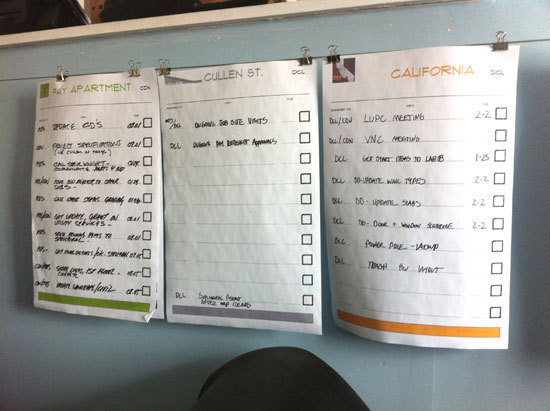I stopped going to coffee shops to work on freelance writing projects after my laptop bit the dust, and decided to suspend disbelief and create a real home office. It was time. I'd been freelancing over a decade.
For years I'd been casually skimming blogs purporting home offices boost productivity, along with those who suggested organizational tricks such as the Pomodoro Technique where you race an egg timer to complete your work and seemed better suited to those with type a personalities than me.
When I wasn't in the coffee shop, I preferred to sit propped up in my bed or on the couch or in my super Ikea Poang chair, and work wherever the spirit moved me.
I was silly to be an office hater, to distrust in the power of a designated writing space. After vacillating for a while, combing through articles and quite a few days of manic arranging and rearranging, I set up my home office. It took me a few days to get really comfortable, but after I did, there was no turning back. My home office is now my happy place. Every morning after drinking a cup of coffee and doing a little meditation, I look forward to hunkering down in my chair, lighting a candle and getting to work. I have honestly been much more productive since creating the office. I can't believe I waited so long.
Here are some basic things I learned.
5 Tricks for Creating a Stellar Freelance Writing Home Office.
1. Be Zen. Start Clean. Start with an empty space. Clutter blocks creative and productive flow. Keep furniture to an absolute minimum. Sweep the floor ritualistically. Burn a candle or clear the room out with some sage. Take all the decorations off the walls. Leave what is only most essential.
2. Reinvent the Wheel. Know thyself. Try a creative alternative work organizing system. Whiteboards and bulletin boards aren't the only ways to map out your working day, week or month. After much trial and error I learned how hanging a clothes line across my wall and hanging with clothes pins chapters of books, to do lists, reminders and payment schedules worked best for me. Everything is printed on the page and visible, can be easily rearranged, and viewed from the chair where I sit in the room. It's a fun and different system. Highly recommended for writers juggling multiple projects (you can have multiple clothes lines) and those who suffer from even mild ADD.
Other alternative organizing systems I have tried include hanging picture frames with colored construction paper inside, and using dry erase markers to write down daily tasks. Cruise around Etsy or Pinterest https://www.pinterest.com/garbagegoneglam/creative-offices/ for other creative home office alternatives.
3. Bring in the green. Plants make people happy. They just do. They clean the air, boost oxygen, decrease stress and infuse daily activities with energy bursts. A few plants can work wonders to stave off cabin fever or the winter doldrums. Try a few, low maintenance plants you don't have to worry about killing. Water them when you should. Gaze at them when you are sad, or stuck on a plot point, character or historical detail in a story.
4 Respect The Light. I have worked mad scientist schedules throughout my freelance career, but often find I am actually most productive when I work the same day lit hours as the rest of the world. It turns out there is a reason for this. A recent study from the University of Texas/San Marcos Nature Center suggest that people who work in daylight maintain better focus than those who work with ill-conceived lights (fluorescents etc). When choosing your office spot, make sure to choose one with enough windows to give you daylight. Put your chair and/or desk and computer in a spot where you won't get glare. When selecting a desk lamp for nighttime overflow or overcast days, choose one with asymmetric light output and color temperatures around 3500-4000k. It turns out that the way the light slants, and color temperatures can have a great influence on your daily work output. See this great infographic by my friend Emily Johnson for nitty gritty scientifically proven techniques for office creation.
http://omnipapers.com/ways-to-organize-your-home-writing-cabinet-infographic/
5. Color Code. Many people have a problem living with white or dingy walls. I am lucky enough now to live in a pine house, where my walls are made of light wood that makes me feel like I'm living inside a tree. Consider which wall, shelf and furniture colors resonate for you. Blue and green are cool natural colors that are said to increase motivation and induce a general sense of tranquility. If your walls are sad walls consider painting them. If you are not allowed to paint, a great technique to get your dose of color cheer and not agitate your landlord is to buy cotton fabric, stretch it over an ordinary poster-board and attach it to the back with pins or glue, and hang it on the walls.
Never be afraid to try something new. Respect your style and sensibilities. One of the luxuries of working away from a traditional office setting is the ability to create your own working space. Give yourself permission to make it amazing.

